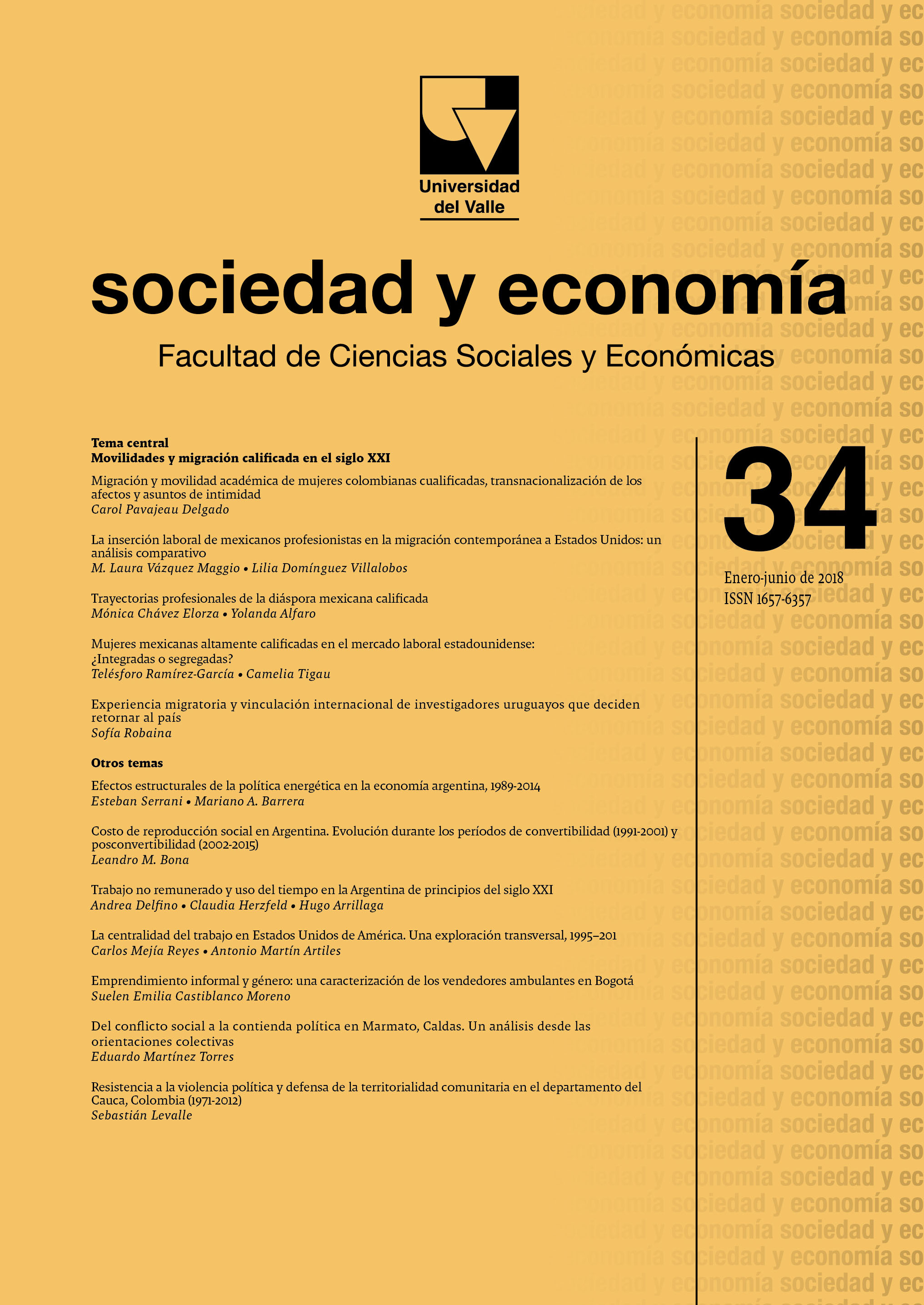Cost of social reproduction in Argentina. Evolution during Convertibility (1991-2001) and Post convertibility (2002-2015) periods
Main Article Content
The objective of this paper is to analyze, from the point of view of the conditions of social reproduction, the changes that took place between the periods of convertibility (1991-2001) and post convertibility (2002-2015) in Argentina. The methodology implemented is the elaboration and estimation of the cost of social reproduction; this is a variable composed of the income needed to reproduce itself on existing material and historical condi- tions in each country; it is composed of salary, retirement and basic rights guaranteed by the State (education, health, etc.). Regarding the results, it is concluded that in the 1990s, reproductive conditions had a declining tendency, intensified at the beginning of post-convertibility, especially because the increase in unemployment and informal working. By contrast, between 2004 and 2015 the cost of social reproduction recovered, first as a result of the dynamics of wages (until 2008) and then by the preponderance of socialized rights (2009-2015).
- Argentina
- Economic Development
- Social Stratification
- Income Distribution
- Wage
Downloads

This work is licensed under a Creative Commons Attribution-NonCommercial 4.0 International License.
Revista sociedad y economía editada por la Facultad de Ciencias Sociales y Económicas de la Universidad del Valle se encuentra bajo una Licencia Internacional Creative Commons Atribución - No comercial 4.0
Basada en una obra en http://sociedadyeconomia.univalle.edu.co





